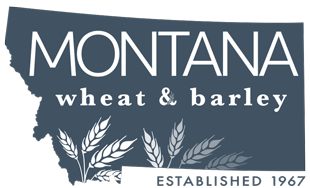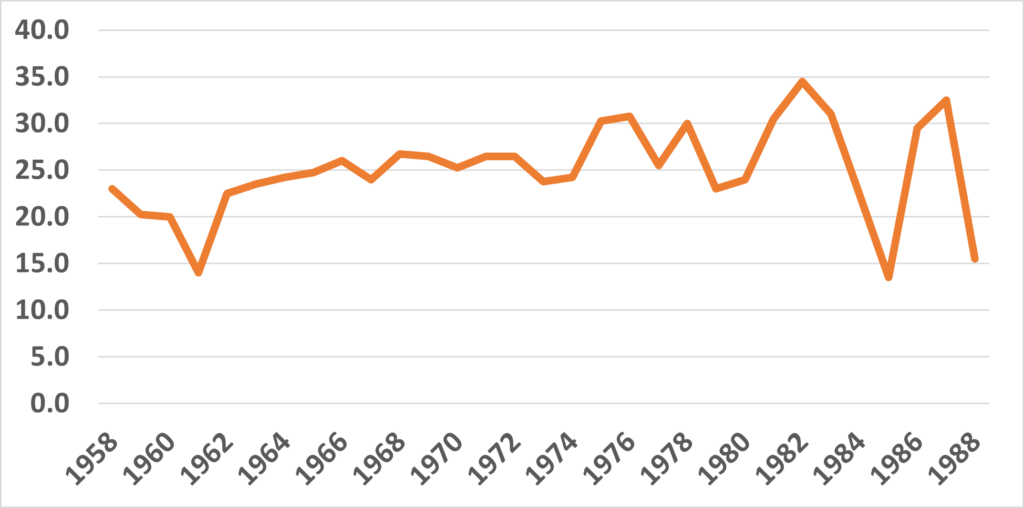Among the rattlesnakes, wolves, grizzly bears, and glaciers Montana wheat growers have 95 frost-free days to work with. A resilient tale unfolds, the story of feeding increasing populations and survival A story of immense shifts in yield. While weather matters, it does not as much as one would think. Let’s dive into some of the significant events that occurred to bring better wheat for Montanans.
1958-1988: The “Greatest Generation” Yields
Data provided by the National Ag Statistics Service.

From 1958-1988 Montana’s greatest generation wheat growers faced the unpredictable woes of weather with an average combined spring and winter wheat yield of 25 BU/AC. The crops were subject to volatile swings.
Lowest Years
- 1961 – 14 BU/AC
- 1985 – 13.5 BU/AC
- 1988 – 15.5 BU/AC
Highest Years
- 1982 – 34.5 BU/AC
- 1987 – 32.5 BU/AC
1988-2023: “Generation X” Yields
Data provided by the National Ag Statistics Service.
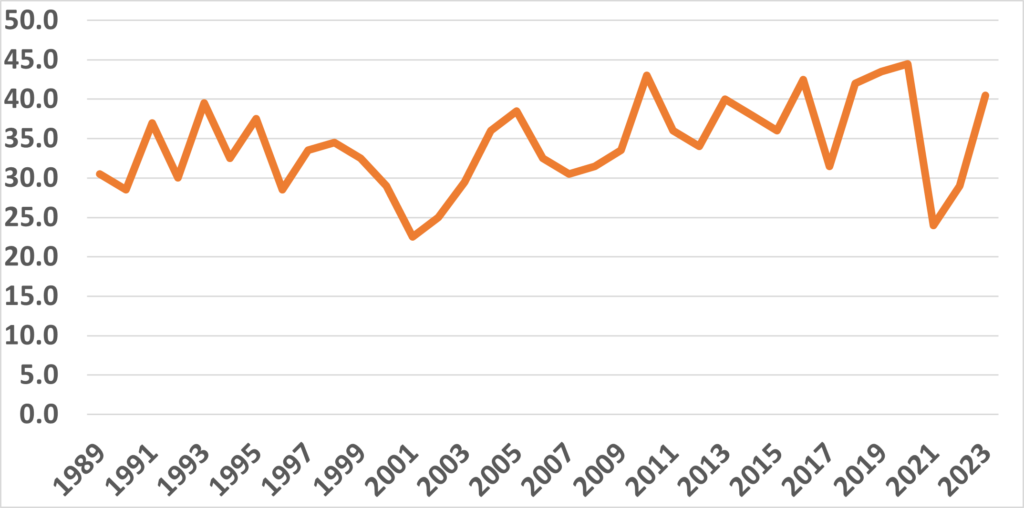
From 1989 to 2023 the average combined spring and winter wheat yield was 34.2 BU/AC. Notably, the Gen X workforce provided remarkable yield resilience in key events that shaped this era.
Lowest Years
- 2001 – 22.5 BU/AC
- 2021 – 24 BU/AC
Highest Years
- 2020 – 44.5 BU/AC
- 2019 – 43.5 BU/AC
Comparing 1958-1988 (30 years) of 25 BU/AC average and 1989-2023 (34 years) of 34.2 BU/AC average. That’s a 27% increase!
It’s Not Weather…. (Sam’s Opinion)
I averaged each of the southern oscillation indexes by year combined with the yearly average yield of spring wheat and winter wheat in Montana. While this does not tell a complete story, it tells you on average each year whether it was a La Nina or El Nino year, and how yield was affected. From the 1990’s on we saw more La Nina events then the previous era. I’ll let you formulate your opinions on this chart…
Southern Oscillation Index ENSO, Versus Montana Wheat Yields
Data provided by the National Ag Statistics Service and NOAA
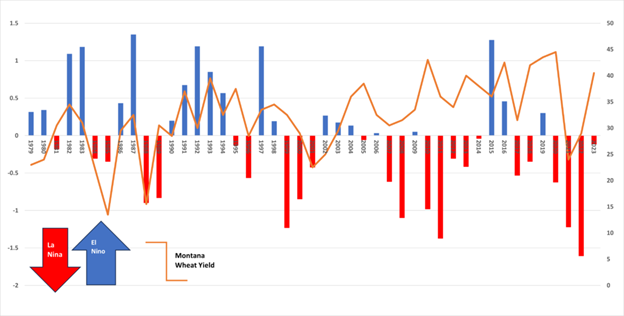
What about rainfall?
Data provided by NCICS
“Annual precipitation varies widely and shows no overall trend. The number of 1-inch extreme precipitation events has generally been near average since 1970” –NCICS
The blue bars are 5-year rainfall averages, and the black dotted lines are annual rainfall amounts. Statewide we receive about 16-20 inches of rainfall a year.
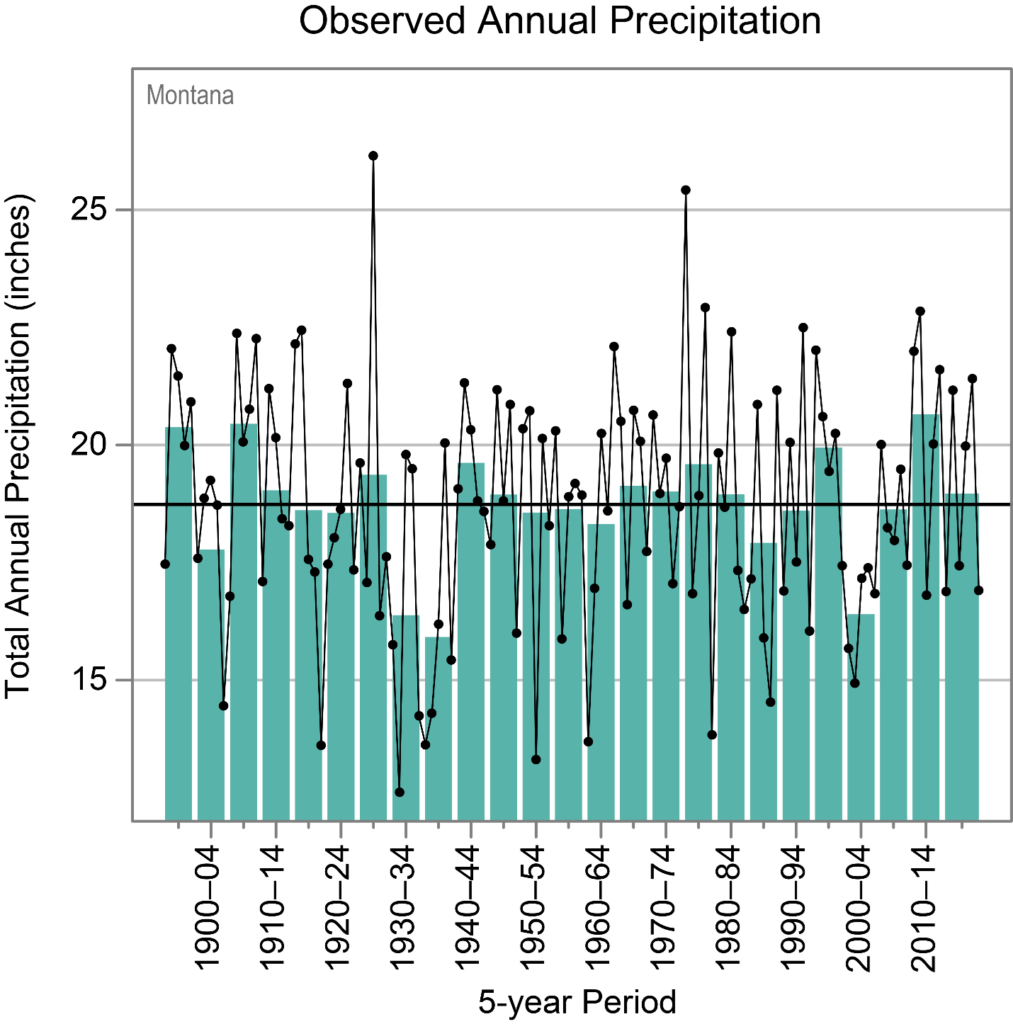
The glaring story I see is the dramatic shift in yield resiliency in the 90s and early 2000s.. Here are a few things that happened during that period.
1999: A spring wheat variety named Reeder came into the picture in 1999 released by North Dakota State University. Reeder had a stay-green trait, which allows the plant to stay under photosynthesis longer even under drought conditions. The stay-green trait has been added to many of the modern varieties we see today. One negative to the stay-green trait is the slight correlation to lower protein quality, which is something Montana State University is working heavily on.
2000: The patented herbicide known as round-up or glyphosate expired. Making chem fallow practices more affordable to every producer. Rapidly changing Montana’s landscape to a no-till structure. The many benefits of no-till are widely known, higher organic material, better fungi soil interaction, less soil compaction, and minimal soil disturbance.
2001: Clearfield was patented and provided better control for invasive grasses and broadleaf. Wheat with the Clearfield gene can now be resistant to the herbicide beyond.
2018: Wheat’s genome is fully mapped with 16 billion DNA letters. The human genome has 3 billion DNA letters.
Additional traits like solid stemmed and aluminum tolerance were more widely incorporated into Montana varieties. The 21st-century wheat genetics added much stability to our average yields. Breeders added some 4-wheel drive traits to withstand poor weather and diseases, we are seeing the lowest years 8-10 Bu’s higher than the greatest generation era. They have also turbocharged yield potential, seeing the top-end 10 BUs higher.
What’s next?
With controversy HB4 wheat.
Solid stem uniformity (under discovery)
Gluten sensitivity and adopting wheat to be more desired by the consumer and baker.
Shuttle breeding, making selections in off-seasons in contrasting environments for two generations per year. We’re doing that.
Locational varieties specifically designed to perform well in microenvironments. Like spring wheat variety MT Sidney
Advancements in High throughput phenotyping and genomic selection
Looking ahead we hope that increased breeding investment will make weather patterns even LESS correlated to Montana’s yields. I anticipate continued marginal average yield gains in the next decade. If HB4 and the varieties associated become globally accepted, we could see another massive increase in yield stability as we saw in the early 2000s. If not, I believe the next decade will be focused on improving end-use qualities to be more desired by overseas customers. Minimizing producer input costs through remote sensing, you’ve all seen the incredible technologies coming out. Finally, an increase in identity persevered wheat types like lower gluten sensitivity, high fiber, better pasta, and zinc wheat .
